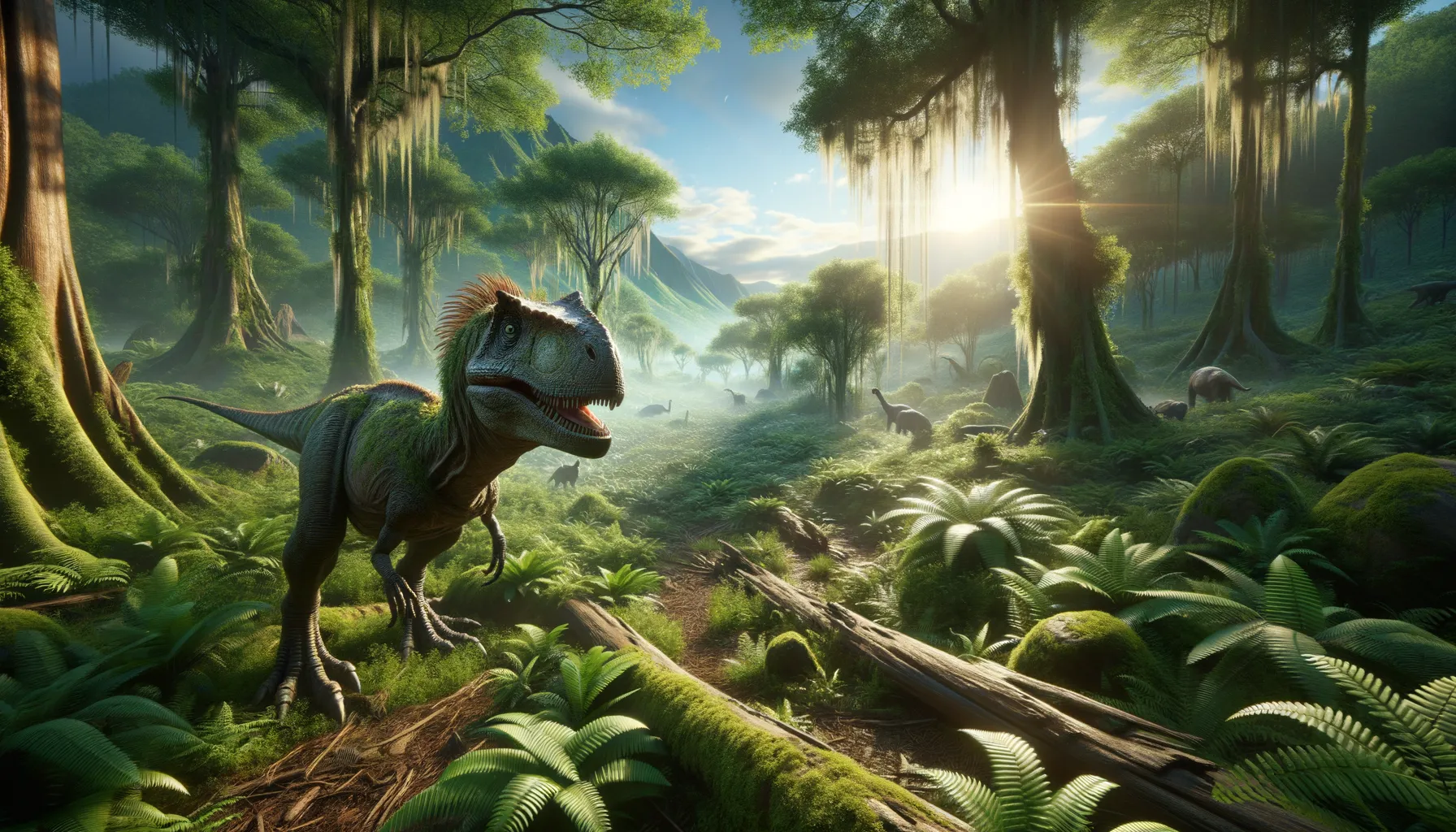
Albalophosaurus
A glimpse into ancient Asian diversity.
Period
Cretaceous
Length
Around 2 meters long.
Height
Roughly 1.5 feet tall at the hips.
Weight
Approximately 15 to 30 kilograms.
Albalophosaurus was a small, bipedal herbivorous dinosaur that roamed the areas that are now part of Japan. It inhabited the Cretaceous period, feeding on the lush vegetation that was abundant at that time. Known for its unique cranial features, this dinosaur plays a crucial role in understanding dinosaur diversity in Asia. Its fossil discoveries have provided great insight into the evolutionary pathways of early ceratopsians.
Diet
Albalophosaurus primarily grazed on plants, making it an herbivore. It relied on the ample vegetation present in its environment to sustain itself, munching on leaves and possibly fruits.
Hunting
As a herbivore, it did not hunt but foraged for food. It may have used its beak-like mouth to snip at low-lying plants and vegetation.
Environmental challenges
Albalophosaurus needed to navigate the dynamic Cretaceous landscape, which could change with climate fluctuations. Predators were a constant threat, requiring vigilance and quick reactions to survive. It had to adapt to varying plant resources, as the types of vegetation available could shift with environmental changes.
Speed
Likely slow and steady, adapting to its environment.
Lifespan
Estimated around 10 to 15 years.
First discovery
Discovered in 1997 in Japan.
Fun Facts
- Albalophosaurus lived during the Early Cretaceous period, which was over 100 million years ago.
- The name Albalophosaurus means 'white crest lizard', reflecting its distinctive skull features.
- Fossils of Albalophosaurus were first discovered in Japan, making it a unique find in the region.
- It is believed that Albalophosaurus was a small, herbivorous dinosaur that likely fed on plants.
- This dinosaur was bipedal, meaning it walked on two legs, which is a common trait among several dinosaur species.
- Albalophosaurus had a characteristic bony crest on its head, which might have been used for display or species recognition.
- Although not as famous as some other dinosaurs, Albalophosaurus provides important insights into the diversity of prehistoric life in Japan.
Growth and Development
Like many dinosaurs, it likely hatched from eggs and grew rapidly in the first few years of life. Juvenile Albalophosaurus might have looked different from adults, with growth spurts leading to changes in body proportions. The rapid growth was essential to enhance survival rates against predators.
Habitat
The habitat of Albalophosaurus included forests and river valleys with abundant plant life. It would have thrived in areas with seasonal changes that affected both climate and food availability. Access to water sources would have been important, providing hydration and supporting diverse plant life.
Interaction with other species
Albalophosaurus likely coexisted with other herbivorous dinosaurs, sharing feeding grounds. It also needed to be cautious of predators, possibly forming small groups for better protection. Competition for food could have occurred, influencing behavior and foraging strategies.
Natural lifespan
Its natural lifespan was about 10 to 15 years.
Reproduction
Albalophosaurus reproduced by laying eggs in nests. These nests were likely hidden among vegetation or in secluded areas to protect from predators. Parental care may have been limited, with young dinosaurs having to fend for themselves soon after hatching.
Social behaviour
It may have exhibited social behaviors such as forming groups or foraging gatherings. Social behavior could have been influenced by the need for protection against predators. Display behaviors might have been part of communication within the species.
Fossil locations
Fossils of Albalophosaurus have been primarily discovered in Japan. These discoveries offer essential insights into the geographical distribution of early ceratopsians. The fossil sites provide valuable information about the environment and ecology of the time.
